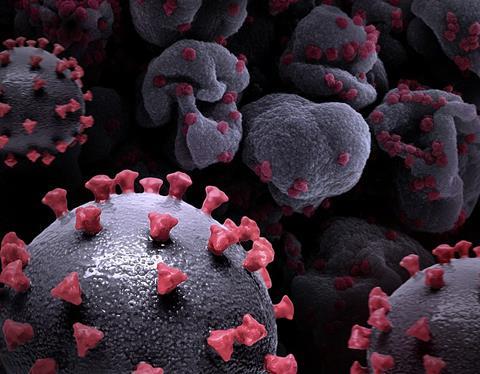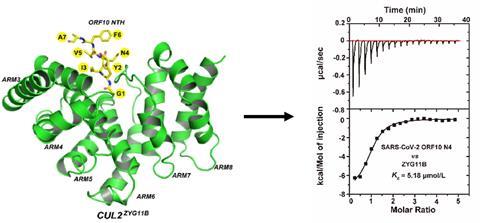A new article from Acta Pharmaceutica Sinica B discusses how SARS-CoV-2 ORF10 hijacking ubiquitination machinery reveals potential unique drug targeting sites.

Viruses often manipulate ubiquitination pathways to facilitate their replication and pathogenesis. CUL2ZYG11B known as the substrate receptor of cullin-2 RING E3 ligase, is bound by SARS-CoV-2 ORF10 to increase its E3 ligase activity, leading to degradation of IFT46, a protein component of the intraflagellar transport (IFT) complex B. This results in dysfunctional cilia, which explains certain symptoms that are specific to COVID-19.
READ MORE: Scientists probe molecular cause of COVID-19 related diarrhea, revealing potential treatments
READ MORE: Scientists uncover molecular basis of how potential anti-Covid drug binds to viral N-glycan
However, the precise molecular mechanism of how ORF10 recognizes CUL2ZYG11B remains unknown. The authors of this article determined the crystal structure of CUL2ZYG11B complexed with the N-terminal extension (NTE) of SARS-CoV-2 ORF10 (2.9 Å). The structure reveals that the ORF10 N-terminal heptapeptide (NTH) mimics the Gly/N-degron to bind CUL2ZYG11B.
Mutagenesis studies
Mutagenesis studies identified key residues within ORF10 that are key players in its interaction with CUL2ZYG11B both in ITC assay and in vivo cells. In addition, enhancement of CUL2ZYG11B activity for IFT46 degradation by which ORF10-mediated correlates with the binding affinity between ORF10 and CUL2ZYG11B was proven.
Finally, a Global Protein Stability system was used to show that the NTH of ORF10 mimics the Gly/N-degron motif, thereby binding competitively to CUL2ZYG11B and inhibiting the degradation of target substrates bearing the Gly/N-degron motif.

Overall, this study sheds light on how SARS-CoV-2 ORF10 exploits the ubiquitination machinery for proteasomal degradation, and offers valuable insights for optimizing PROTAC-based drug design based on NTH CUL2ZYG11B interaction, while pinpointing a promising target for the development of treatments for COVID-19.







No comments yet